
By Dr. Joseph Mercola | mercola.com
STORY AT-A-GLANCE
- Anxiety disorders — which include generalized anxiety disorder, social anxiety, and panic disorder — affect an estimated 40 million Americans or about 18 percent of the U.S. population over the age of 18
- Genetics, brain chemistry, personality, life events, and stress play a role in anxiety disorders. Anxiety is a normal response to stress but, in some, the anxiety becomes overwhelming and difficult to cope with
- Other factors that can contribute to anxiety and panic attacks include cell phone use, food additives, and artificial sweeteners, gut dysfunction, nutritional deficiencies, excessive sugar, improper breathing and toxic exposures such as mold
According to research1 published in 2015, anxiety (characterized by constant and overwhelming worry and fear) is becoming increasingly prevalent in the U.S., now eclipsing all forms of cancer by 800 percent.
Data from the National Institute of Mental Health (NIMH) suggests the prevalence of anxiety disorders in the U.S. — which include generalized anxiety disorder, social anxiety, and panic disorder — may be as high as 40 million, or about 18 percent of the population over the age of 18, making it the most common mental illness in the nation.2,3
According to research by the Center for Collegiate Mental Health at Penn State, anxiety has also surpassed depression as the most commonly diagnosed mental health problem among college students, with more than 50 percent of students visiting campus clinics reporting anxiety.4
Related Article: 7 Painless Ways to Release Anxiety & Relax
Novel Treatments Aimed at Anxiety-Ridden Students Prove Successful
Fortunately, there are many treatment options available, and some of the most effective treatments are also among the safest and least expensive and don't involve drugs.
For example, many colleges are tackling the problem with high-tech solutions. University of Central Florida (UCF) is testing a new online app5 called Tao Connect for treating anxiety. It includes a seven-module cognitive-behavioral program and allows the student to conduct videoconferences with a therapist.
The program, developed with support from the National Science Foundation (NSF), claims it can offer “effective treatment with one-third the counselor time and half the overall cost of traditional face-to-face individual treatment.”
Dietary interventions to correct nutritional deficiencies and/or poor gut health can also be part of the answer, along with strategies to subdue stress, such as the Emotional Freedom Techniques (EFT) and breathing exercises.
Too bad the UCF program didn't incorporate highly effecting tapping like EFT, which is typically far more effective than sessions with conventional therapists.
What Causes Anxiety?
The widespread prevalence of anxiety garnered headlines when popular actress Kristen Stewart confessed to severe anxiety and panic attacks following her rapid rise to stardom following the hit “Twilight” series.6
While genetics, brain chemistry, personality, and life events play a role in the development of anxiety disorders, stress is a common trigger. Public scrutiny is certainly cause for heightened stress, but just about any type of stress can contribute to anxiety and panic attacks.
Anxiety is a normal response to stress, but in some people, the anxiety becomes overwhelming and difficult to cope with, to the point that it affects their day-to-day living. The brain is also actively involved. The National Institute of Mental Health (NIMH) explains:7
“Several parts of the brain are key actors in the production of fear and anxiety … scientists have discovered that the amygdala and the hippocampus play significant roles in most anxiety disorders.
The amygdala … is believed to be a communications hub between the parts of the brain that process incoming sensory signals and the parts that interpret these signals. It can alert the rest of the brain that a threat is present and trigger a fear or anxiety response.
The emotional memories stored in the central part of the amygdala may play a role in anxiety disorders involving very distinct fears, such as fears of dogs, spiders or flying. The hippocampus is the part of the brain that encodes threatening events into memories.”
A number of other situations and underlying issues can also contribute to the problem. This includes but is not limited to the following, and addressing these issues may be what's needed to resolve your anxiety disorder. For more information about each, please follow the hyperlinks:
| Exposure to cell phones, and nonnative electromagnetic fields (EMF) and radio frequencies (RF) | Food additives, food dyes, GMOs and glyphosate.
Food dyes of particular concern include Blue #1 and #2 food coloring; Green #3; Orange B; Red #3 and #40; Yellow #5 and #6; and the preservative sodium benzoate |
| Gut dysfunction caused by imbalanced microflora | Lack of magnesium, vitamin D8 and/or animal-based omega-3.
(Research has shown a 20 percent reduction in anxiety among medical students taking omega-3s9) |
| Use of artificial sweeteners | Excessive consumption of sugar and junk food |
| Improper breathing | Exposure to toxic mold |
Understanding Panic Attacks
A panic attack can be terribly frightening, whether you're used to it or not. An attack typically comes on abruptly, producing intense fear and a sense of impending doom or even death that is typically severely disproportionate to the situation at hand.
Hyperventilation, heart palpitations, trembling, sweating, hot or cold flashes, nausea, dizziness or light-headedness, numbness and/or tingling sensations are all common physical symptoms. Panic attacks tend to peak within 10 minutes, and most subside within 30 minutes.
Few last more than one hour. It's not uncommon for people to seek medical help, thinking they're having a heart attack or are dying when panic attacks first set in and they're unfamiliar with the symptoms.10
Familiarizing yourself with panic disorders and the function of your fight-or-flight response can be helpful to guide you toward self-help strategies that work for your unique situation.
For example, contrary to popular belief, taking deep breaths can actually make matters worse, as explained by Patrick McKeown, a leading Buteyko Breathingexpert.
Breathing Exercise to Quell Panic Attacks and Anxiety
A breathing exercise that can help quell anxiety and panic attacks is summarized below. This sequence helps retain and gently accumulate CO2, leading to calmer breathing and reduced anxiety. In other words, the urge to breathe will decline as you go into a more relaxed state.
- Take a small breath into your nose, a small breath out; hold your nose for five seconds in order to hold your breath, and then release to resume breathing.
- Breathe normally for 10 seconds.
- Repeat the sequence several more times: small breath in through your nose, small breath out; hold your breath for five seconds, then let go and breathe normally for 10 seconds.
McKeown has also written a book specifically aimed at the treatment of anxiety through optimal breathing, called “Anxiety Free: Stop Worrying and Quieten Your Mind — Featuring the Buteyko Breathing Method and Mindfulness,” which can be found on Amazon.com.11
In addition to the book, ButeykoClinic.com also offers a one-hour online course and an audio version of the book, along with several free chapters12 and accompanying videos.13
Other Ways to Improve Your Coping Skills
In the featured video above, Marie Jacquemin of Soul Pancake illustrates what it's like to be in the midst of a panic attack. As a person suffering with anxiety disorder, she offers the following suggestions for tempering your anxiety when it strikes:14
- Go for a brisk walk outside, rather than pacing indoors.
- Listen to nature sound or calming music
- Exercise, which helps drain excess energy from your fight-or-flight reflex. Indeed, some psychologists swear by exercise as a primary form of treatment for anxiety and other mood disorders. Exercise leads to the creation of new neurons, including those that release the calming neurotransmitter GABA, while boosting levels of potent brain chemicals like dopamine and norepinephrine, which may help buffer some of the effects of stress.
- Call someone you trust, and “talk it out” until you feel more centered.
Related Article: How to Tap Your Meridian Points to Reduce Nervousness & Anxiety (Video)
EFT — A Long-Term Solution to Anxiety That Can Produce Rapid Results
It's estimated that only one-third of people with anxiety disorders receive treatment,15 which is highly recommended if you're struggling with anxiety. That said, keep in mind that “treatment” doesn't necessarily mean drugs. Energy psychology techniques such as EFT can be very effective by helping you to actually reprogram your body's reactions to the unavoidable stressors of everyday life.
This includes both real and imagined stressors, which can be significant sources of anxiety. EFT was developed in the 1990s by Gary Craig, a Stanford engineer specializing in healing and self-improvement. It's akin to acupuncture, which is based on the concept that a vital energy flows through your body along invisible pathways known as meridians. EFT stimulates different energy meridian points in your body by tapping them with your fingertips, while simultaneously using custom-made verbal affirmations.
This can be done alone or under the supervision of a qualified therapist. By doing so, you reprogram the way your body responds to emotional stressors. Recent research has shown that EFT significantly increases positive emotions, such as hope and enjoyment, and decreases negative emotional states, including anxiety.
Following the publication of a 2012 review16,17 in the American Psychological Association's journal Review of General Psychology — which assessed 18 randomized controlled trials showing strong benefits — and a landmark study18 on EFT for war veterans suffering from traumatic stress in 2013, EFT is moving closer to meeting the criteria for “evidence-based treatment.”
EFT Is Particularly Well Suited for the Treatment of Anxiety
https://www.youtube.com/watch?v=ZeYkItpMkoQ
EFT is particularly powerful for treating stress and anxiety because it specifically targets your amygdala and hippocampus, which are the parts of your brain that help you decide whether or not something is a threat.19,20 If you recall NIMH's explanation about how your amygdala and hippocampus are involved in anxiety disorders, you can see why tapping is such a powerful tool. EFT has also been scientifically shown to lower cortisol levels,21 which are elevated when you're stressed or anxious.
In the video above, EFT therapist Julie Schiffman demonstrates how to tap for panic attacks and anxiety relief. Please keep in mind that while anyone can learn to do EFT at home, self-treatment for serious issues like persistent anxiety is not recommended. For serious or complex issues, you need someone to guide you through the process. That said, the more you tap, the more skilled you'll become.
Just recognize that if you have a serious anxiety issue and don't receive any benefit from self-therapy, that it doesn't mean that EFT is useless. It means you need to seek an expert professional consultation that can customize the approach for your specific setting.
It takes many years of training to develop the skills to become an effective therapist, so if one doesn't work, seek out another, as it is without a doubt the most effective clinical strategy I have ever used for anxiety, and certainly better than any pharmaceutical drug option.
Why Anti-Anxiety Drugs Are Best Left as a Last Resort
https://www.youtube.com/watch?v=2X6ZFmo3VBY
The conventional treatment for most anxiety disorders typically involves some kind of prescription drug. What's worse, many times, that's the extent of the treatment options offered. This is why it's so important to educate yourself about the potential sources of your disorder and investigate your options.
Anti-anxiety drugs such as benzodiazepines, or “benzos,” which include Ativan, Xanax, and Valium, are a poor solution and come with many potentially serious risks, including memory loss, hip fractures, and addiction. Up to 43 percent of older adults use benzodiazepines for anxiety and insomnia, often chronically, even though their long-term effectiveness and safety remain unproven.
People who take these drugs are nearly four times more likely to die prematurely than people who don't, and also have a 35 percent greater risk of cancer. There is also evidence that benzodiazepine use by older adults results in a 50 percent higher risk for dementia.
Overdose Deaths From Anxiety Drugs Are on the Rise
Prescriptions for benzos tripled from 1996 to 2013, but this doesn't fully account for the uptick in overdoses from these drugs, which quadrupled during that time period.22 The authors speculate that people may be using benzodiazepines in riskier ways, such as taking higher doses or taking them for longer periods of time, both of which increase your risk of overdosing.
Benzodiazepines exert a calming effect by boosting the action of a neurotransmitter called gamma-aminobutyric acid (GABA), in the same way as opioids (heroin) and cannabinoids (cannabis). This, in turn, activates the gratification hormone, dopamine, in your brain. Taking anti-anxiety medications over time can result in addiction or physical dependence, and getting off of them can be a major challenge.
“Benzodiazepine withdrawal syndrome” is characterized by panic, insomnia, sweating, vomiting, seizures, muscular pain and a plethora of other symptoms that can persist for up to two weeks.23 In the video above, people across the globe shared their stories about how benzodiazepine drugs, taken as prescribed, led to serious side effects and harm.
Remember, You Have Options
Considering the risks, I would urge you to look at drugs as a last resort rather than a first-line treatment. Far safer strategies to explore include exercise, EFT, breathing exercises, optimizing your gut flora and correcting any nutritional imbalances, such as lack of magnesium, vitamin D or animal-based omega-3. You can also try acupuncture,24 which like EFT bridges the gap between your mind and body.
Also, lower your sugar and processed food intake, be sure to get plenty of restorative sleep, and be mindful of your exposure to EMFs and the use of wireless technologies. At the bare minimum, avoid keeping any of these gadgets next to you while sleeping. Also, evaluate whether you might be exposed to toxins. A common symptom of toxic mold exposure is anxiety, so ask yourself if there's any kind of pattern; do your symptoms improve when you spend time away from your home or office, for example?
You can also try out cognitive-behavioral programs. A number of universities now offer Tao Connect25 to their students, but even if you're not a student, there are free online programs available that you can use. Some examples include MoodGYM,26 e-couch,27Learn to Live28 and CBT Online.29 Anxiety and panic attacks can significantly reduce your quality of life, so it's well worth it to keep going until you find a lasting solution.





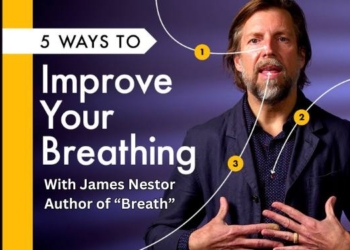
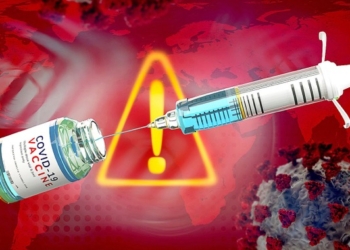
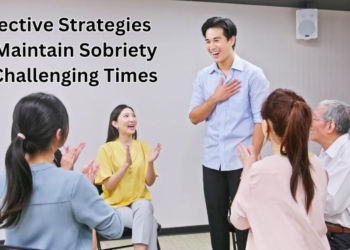
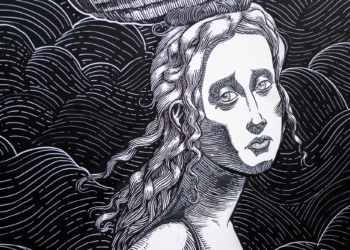
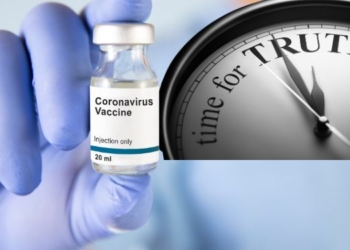



![Everything You Ever Wanted to Know About 9/11 Conspiracy Theory in Under 5 Minutes [VIDEO] | by James Corbett](https://consciouslifenews.com/wp-content/uploads/2018/09/911-a-conspiracy-theory-120x86.jpg)

Dear person reading this,
I hope your day has been going well, if not, I hope it gets better You are an amazing person who will inspire others to do great things so keep up the hard work. FOLLOW US TO LEARN THE TRUTH !
I bet its more than 40 million, anxiety and excitement are the same exact thing in your brain, the only difference between the two feelings is perception.
Materialism?
I use all the natural methods described in this article in addition to MMJ and Vistaril. I have CPTSD.
Also yoga and meditation.
A media induced state for profits
Submerge your face in cold water. Has worked like a charm for me when it feels like my heart is going to burst from my chest
Benzos block production of Gaba in your brain. Buy and take extra Gaba – it works.
I am looking for a natural solution. I was fine until two years ago. I am 54. It all started in a grocery store, then a restaurant, I understand the key signals. Thanks for the video.
Send me a pm of you want to know what the cure is 🙂
A lot is also misdiagnosis by medico’s then whack them on prescription “anti depressant” meds – look into Robin Williams and his post mortem neurological results. Never a clearer picture of rushing to misdiagnose as major depression than in his case…….
This is Alexis. First to counteract anxiety. Observe your anxiety know where its coming from. Embrace anxiety. If you resist anxiety then you will be more vulnerable to it. Accept it and you will feel calm LASTLY, . Demand More of anxiety. This will help you not worry so much of anxiety and just letting it come to you. The Result is you BUILD Confidence.
Go to the Link down below to get a FREE audio for anxiety and learn how you can CONQUER Anxiety.
https://tinyurl.com/yah5wkor